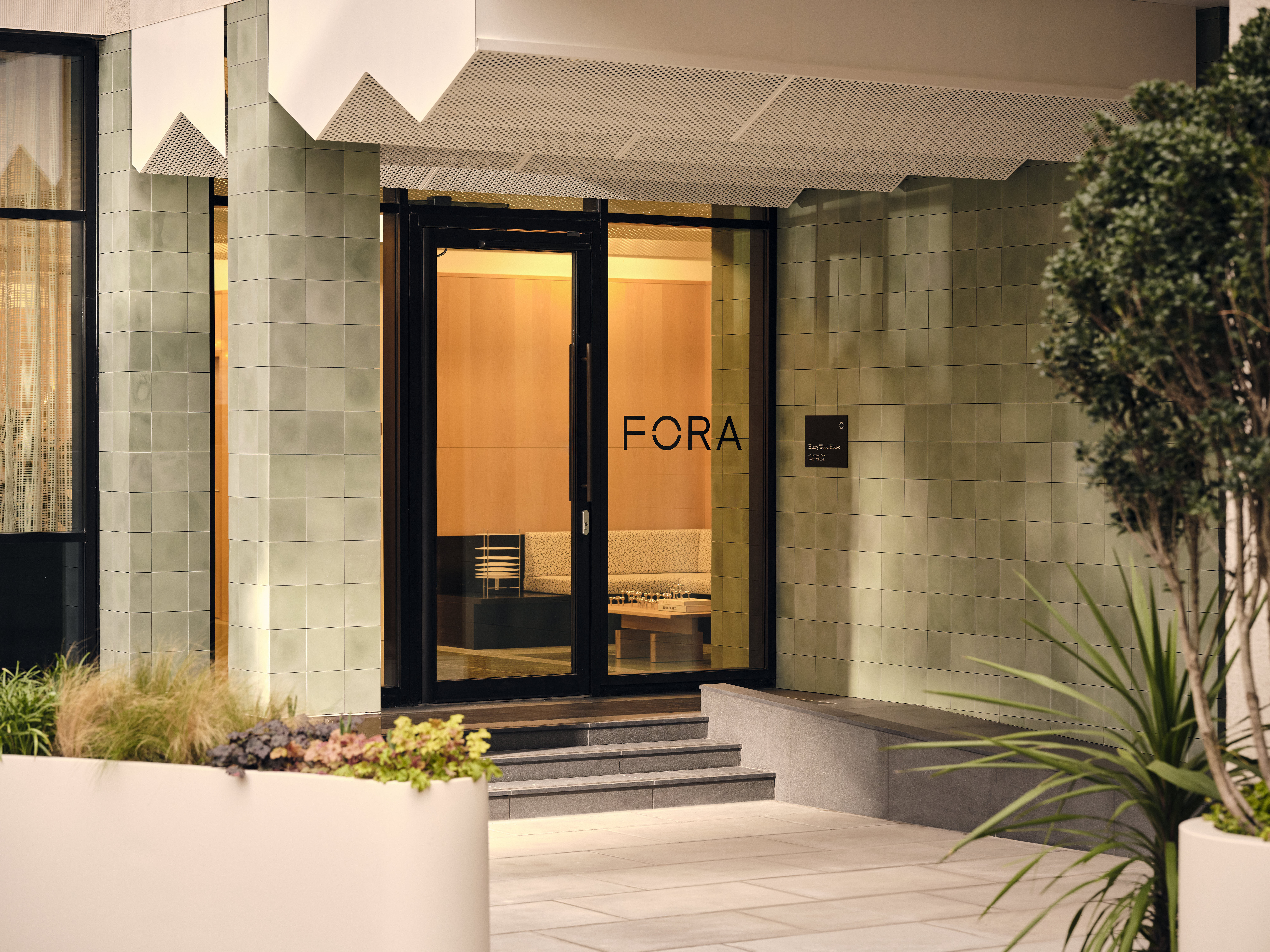
If Fora Space’s newly minted London outpost, Henry Wood House, sitting just across the road from the Langham Hotel and John Nash’s 1824 All Souls Church, is anything to go by, the days of the quotidian office space are well and truly numbered – no longer is co-working a novelty.
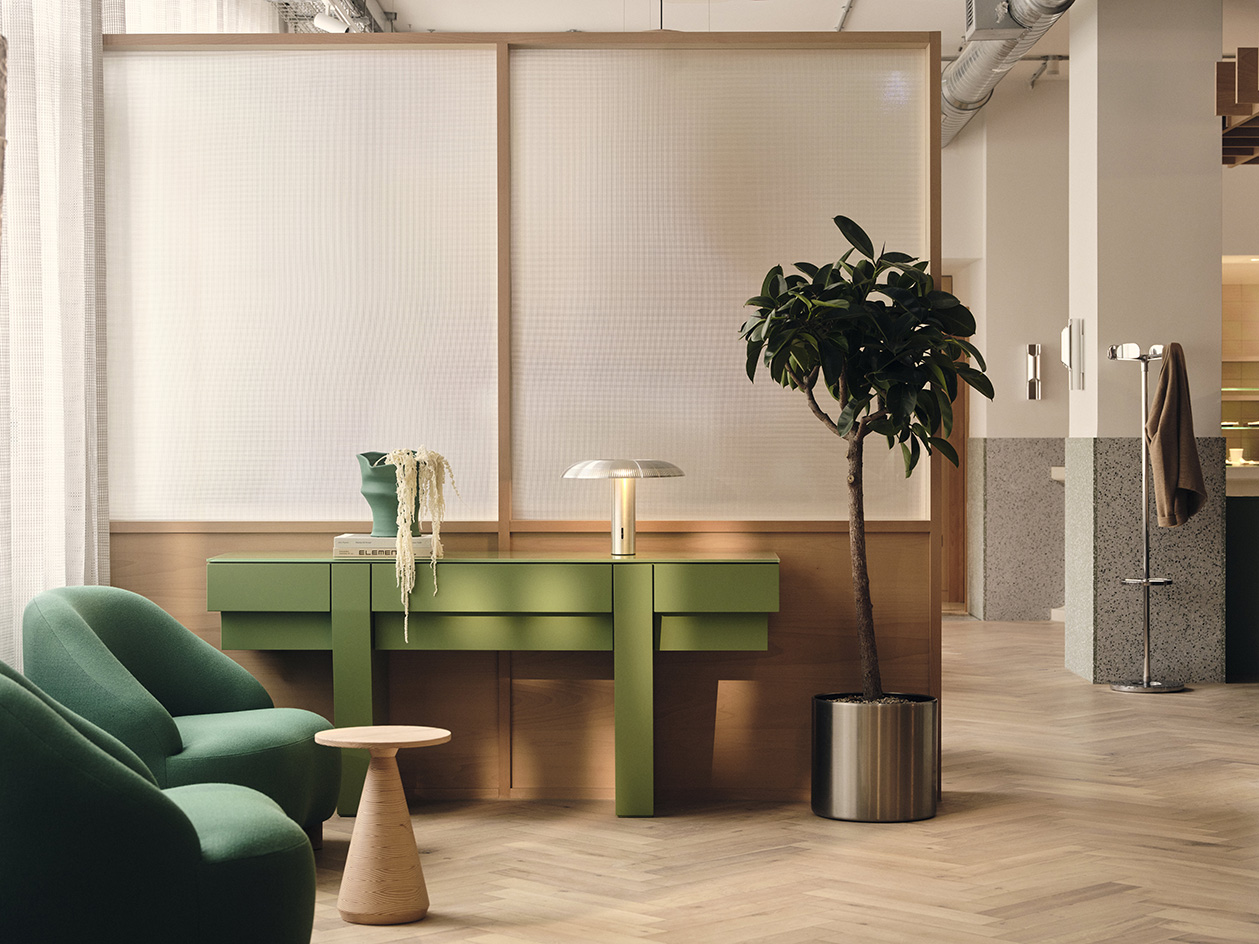
Step inside Henry Wood House by Nice Projects
It helps that London-based design studio Nice Projects (also behind the recent opening of restaurant Claudine in Singapore) was tapped to breathe new life into the Henry Wood House, a postmodernist pile built in 1964 on the site of St George’s Hall where the Prom concerts were conducted by Henry Wood after whom the building is named.
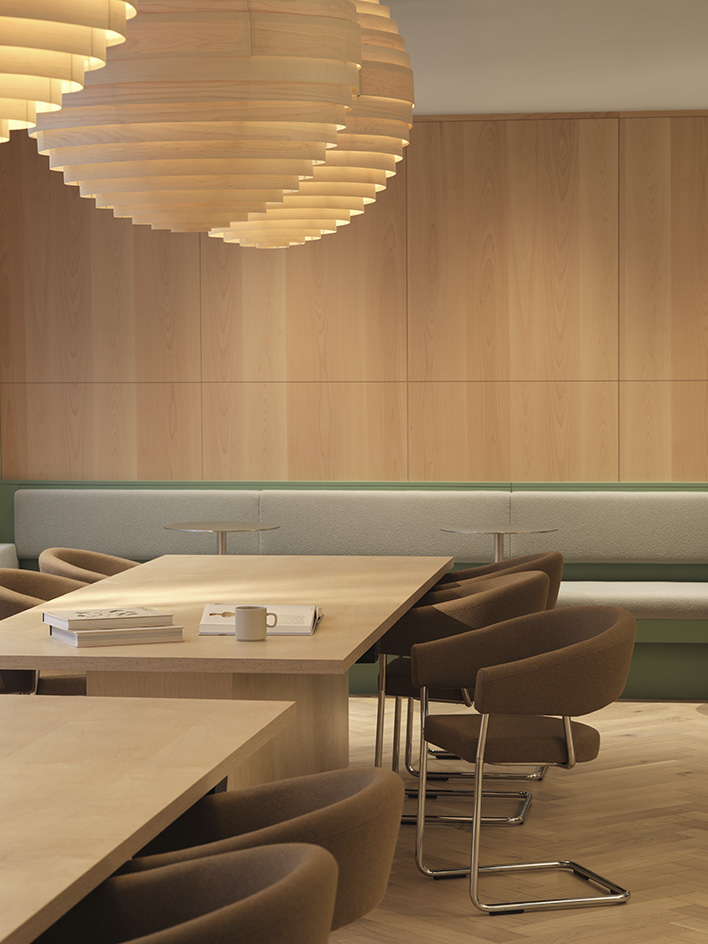
Taking up the first eight floors of the 18-storey building, the interiors are soothing on the senses and almost addictively tactile, thanks to a savvy mix of colours and textures that create a quietly relaxed, residential mood that so many other co-working spaces strive for, but rarely achieve.
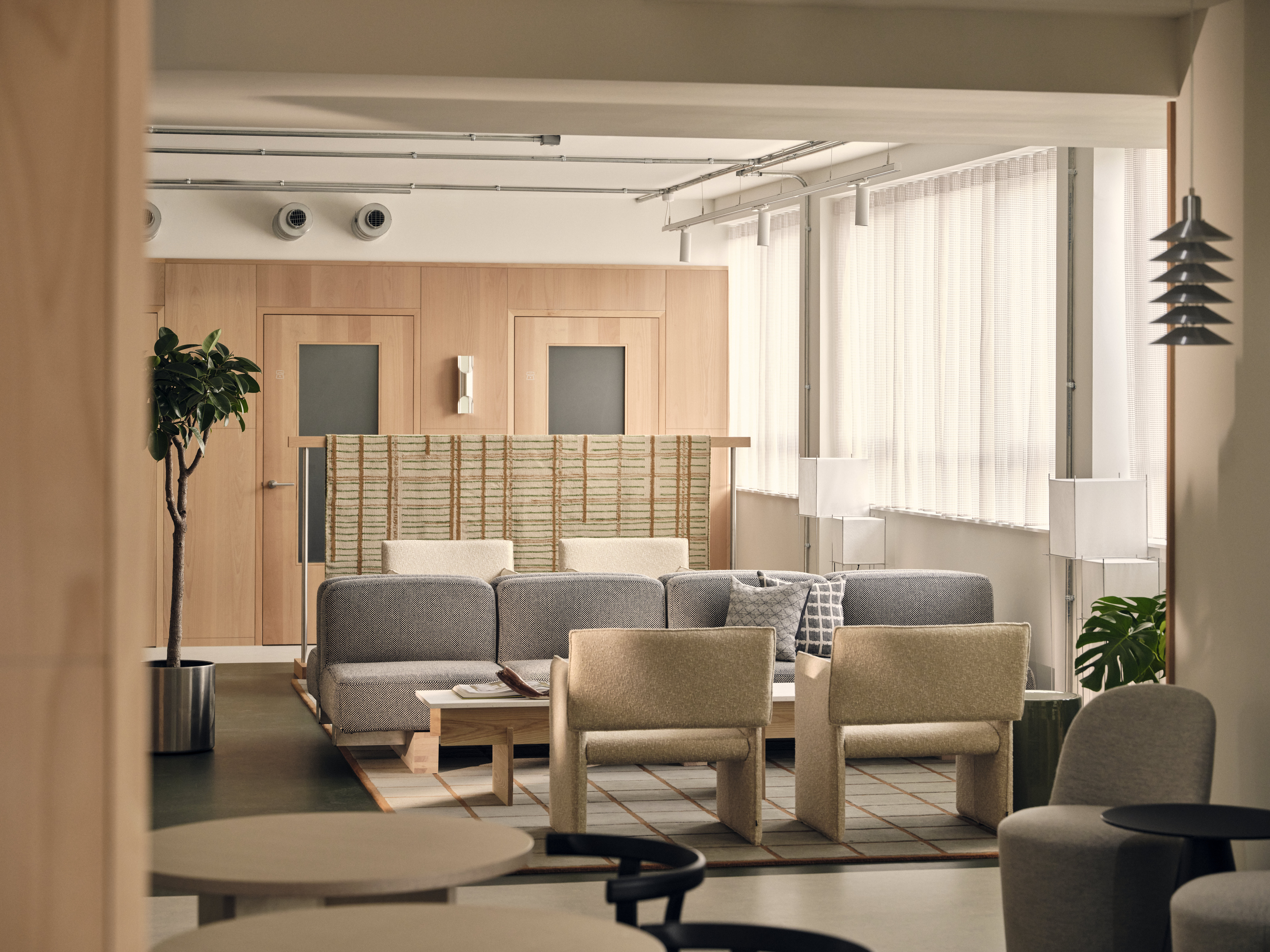
‘I suppose just by having designed a lot of hospitality spaces, we know what makes a space feel inviting and warm, what elements make people want to spend time in a space, and how to make them feel comfortable,’ says Nice Projects’ co-founder Sacha Leong who, with his partner Simone McEwan, was careful to link the mood-board and materiality back to the building’s DNA.
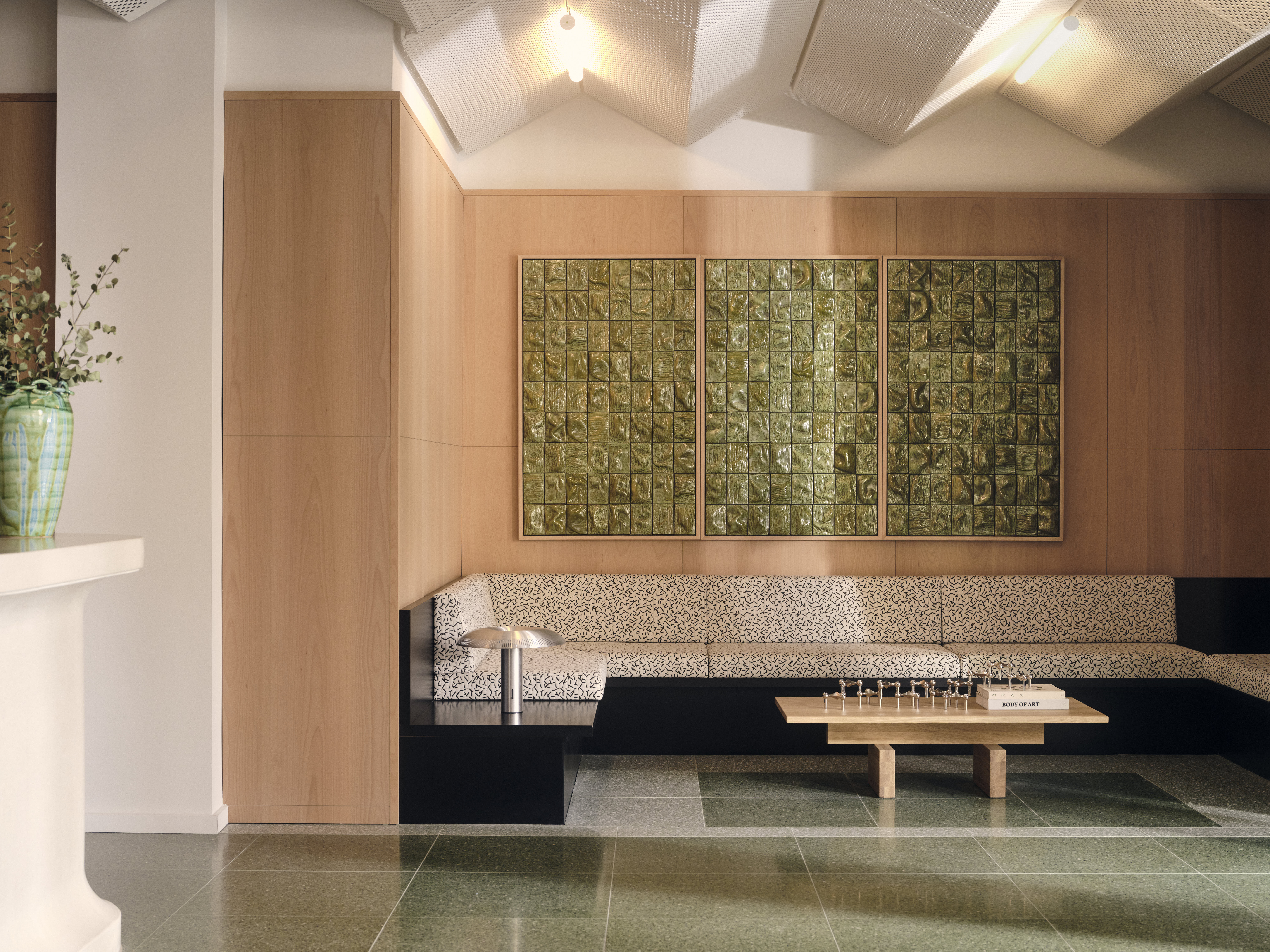
There was certainly plenty to work on, not least the suite of co-working desks, hived-off offices, an entire sweep of meeting rooms on the fifth floor, a penthouse board room with panoramic views over West London, yoga nook, gym, and cafe.
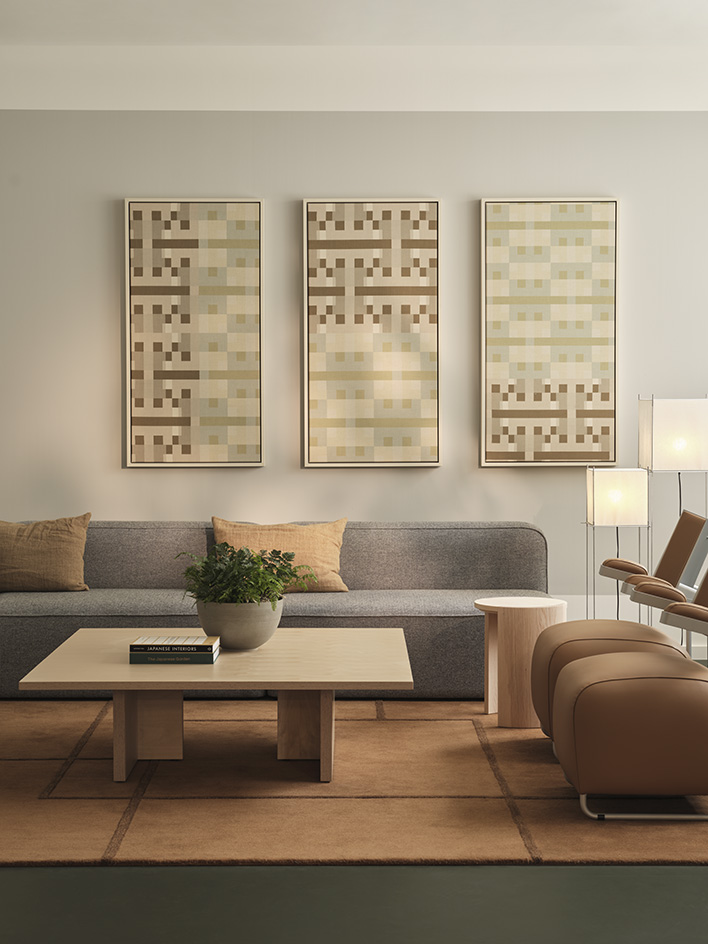
Not surprisingly, the biggest challenge was keeping the different spaces from feeling repetitive, whilst still binding the whole with a unified design language.

Referencing the 1960s with a gimlet millennial eye, the designers have created an updated version that feels contemporary, yet warm and inviting. This included restoring the original terrazzo floors in the lift lobbies and refinishing the existing parquet floors.
Receive our daily digest of inspiration, escapism and design stories from around the world direct to your inbox.
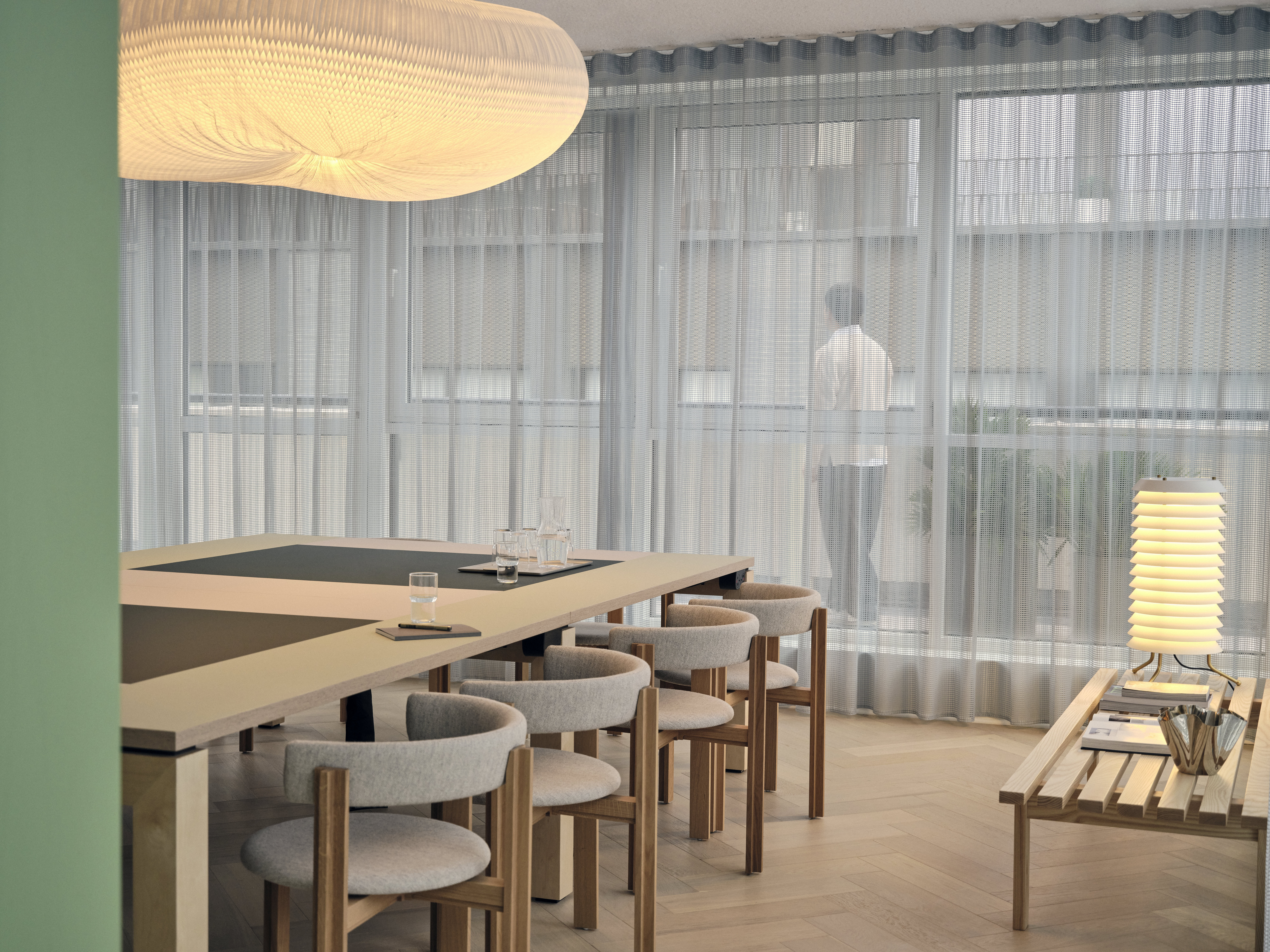
‘We used a lot of natural, tactile, robust materials that would wear well,’ Leong and McEwan explain. ‘We also found many ways to be sustainable. We reupholstered old Vitra Eames desk chairs, and worked with Kvadrat to upcycle all the existing loose textiles into new table tops for the ground floor café.'
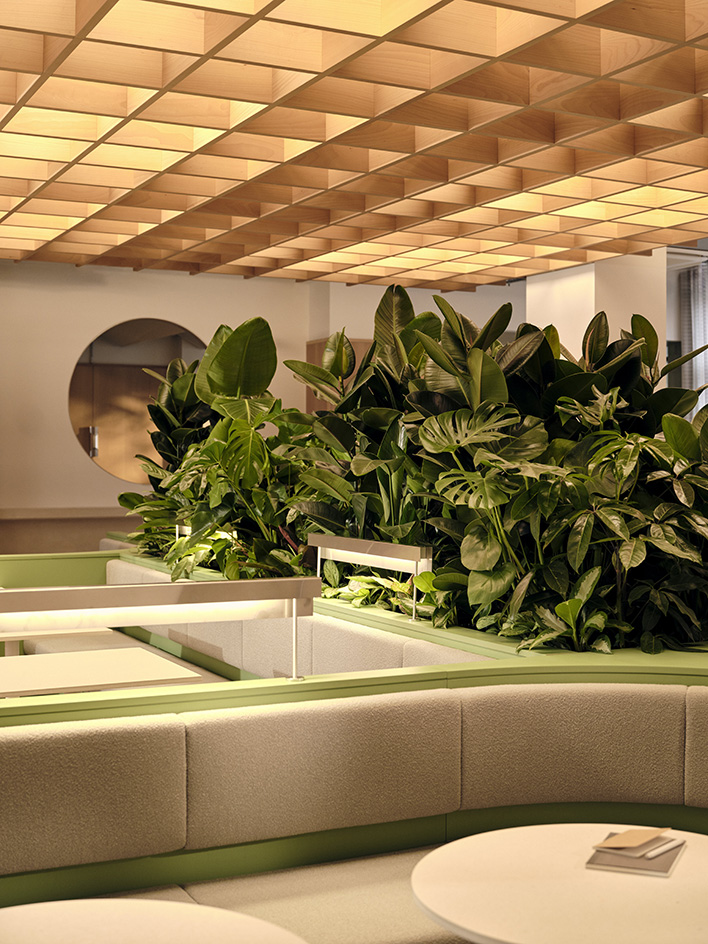
'Overall, we worked with a tight material- and colour-palette, using different tones and textures throughout, but in a way that makes the spaces feel coherent.’

The result is a fresh take on what is becoming a common working experience, especially in these post-pandemic times, Leong and McEwan bringing what they hope is ‘a sense of history, playfulness and life back into the building’.


Daven Wu is the Singapore Editor at Wallpaper*. A former corporate lawyer, he has been covering Singapore and the neighbouring South-East Asian region since 1999, writing extensively about architecture, design, and travel for both the magazine and website. He is also the City Editor for the Phaidon Wallpaper* City Guide to Singapore.
-
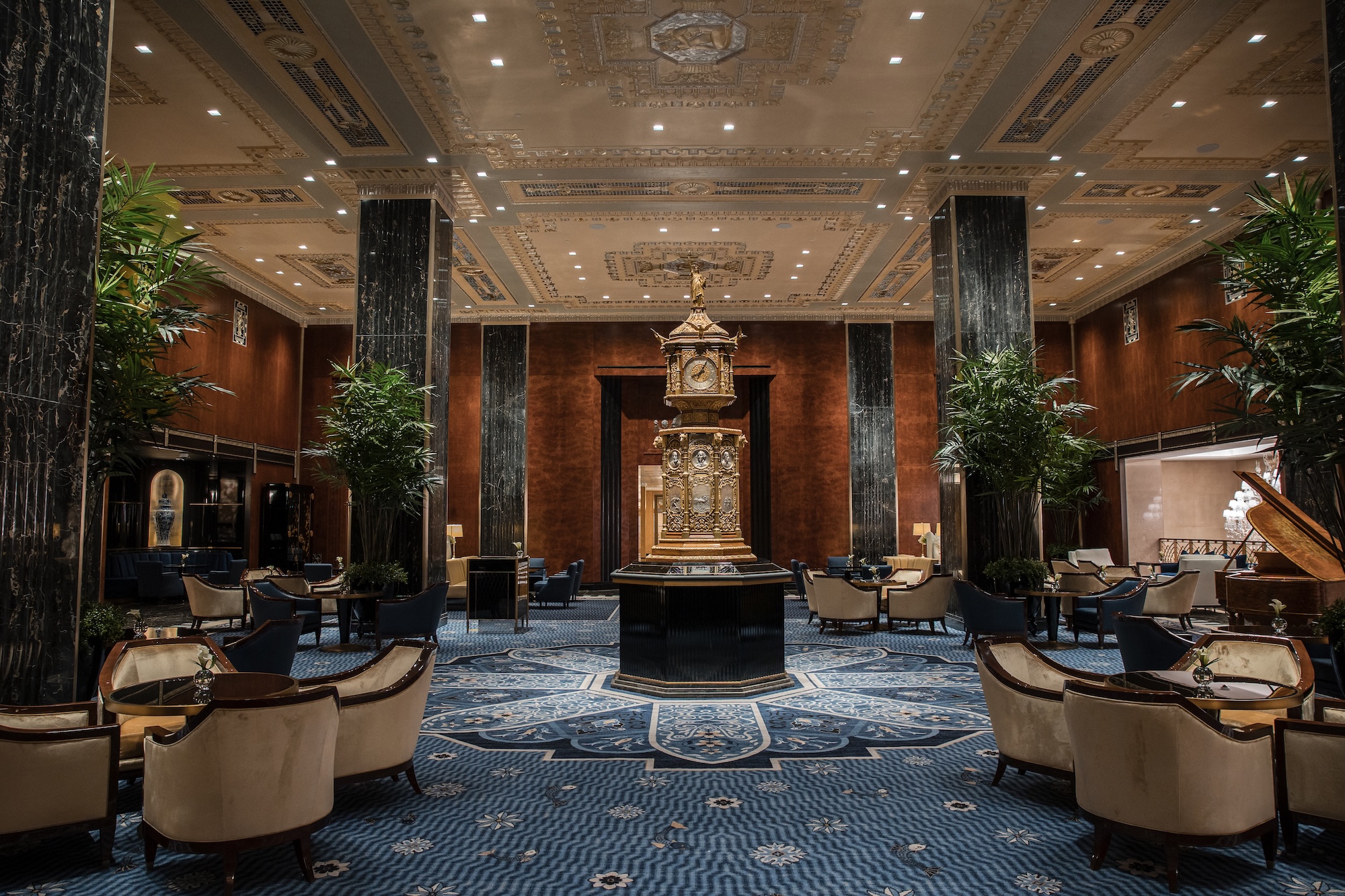 Is the Waldorf Astoria New York the ‘greatest of them all’? Here’s our review
Is the Waldorf Astoria New York the ‘greatest of them all’? Here’s our reviewAfter a multi-billion-dollar overhaul, New York’s legendary grand dame is back in business
-
 Colleen Allen’s poetic womenswear is made for the modern-day witch
Colleen Allen’s poetic womenswear is made for the modern-day witchAllen is one of New York’s brightest young fashion stars. As part of Wallpaper’s Uprising column, Orla Brennan meets the American designer to talk femininity, witchcraft and the transformative experience of dressing up
-
 A new Korean garden reimagines tradition for the 21st century
A new Korean garden reimagines tradition for the 21st centuryThe new Médongaule Korean Gardens in Gyeonggi Province explore the country’s rich tradition; within it, the Seongok Academy Building provides a layered spatial experience drawing on heritage and a connection with nature
-
 Fulham FC’s new Riverside Stand by Populous reshapes the match-day experience and beyond
Fulham FC’s new Riverside Stand by Populous reshapes the match-day experience and beyondPopulous has transformed Fulham FC’s image with a glamorous new stand, part of its mission to create the next generation of entertainment architecture, from London to Rome and Riyadh
-
 This modern Clapham house is nestled indulgently in its garden
This modern Clapham house is nestled indulgently in its gardenA Clapham house keeps a low profile in south London, at once merging with its environment and making a bold, modern statement; we revisit a story from the Wallpaper* archives
-
 Step inside this perfectly pitched stone cottage in the Scottish Highlands
Step inside this perfectly pitched stone cottage in the Scottish HighlandsA stone cottage transformed by award-winning Glasgow-based practice Loader Monteith reimagines an old dwelling near Inverness into a cosy contemporary home
-
 This curved brick home by Flawk blends quiet sophistication and playful details
This curved brick home by Flawk blends quiet sophistication and playful detailsDistilling developer Flawk’s belief that architecture can be joyful, precise and human, Runda brings a curving, sculptural form to a quiet corner of north London
-
 A compact Scottish home is a 'sunny place,' nestled into its thriving orchard setting
A compact Scottish home is a 'sunny place,' nestled into its thriving orchard settingGrianan (Gaelic for 'sunny place') is a single-storey Scottish home by Cameron Webster Architects set in rural Stirlingshire
-
 Porthmadog House mines the rich seam of Wales’ industrial past at the Dwyryd estuary
Porthmadog House mines the rich seam of Wales’ industrial past at the Dwyryd estuaryStröm Architects’ Porthmadog House, a slate and Corten steel seaside retreat in north Wales, reinterprets the area’s mining and ironworking heritage
-
 Arbour House is a north London home that lies low but punches high
Arbour House is a north London home that lies low but punches highArbour House by Andrei Saltykov is a low-lying Crouch End home with a striking roof structure that sets it apart
-
 A former agricultural building is transformed into a minimal rural home by Bindloss Dawes
A former agricultural building is transformed into a minimal rural home by Bindloss DawesZero-carbon design meets adaptive re-use in the Tractor Shed, a stripped-back house in a country village by Somerset architects Bindloss Dawes